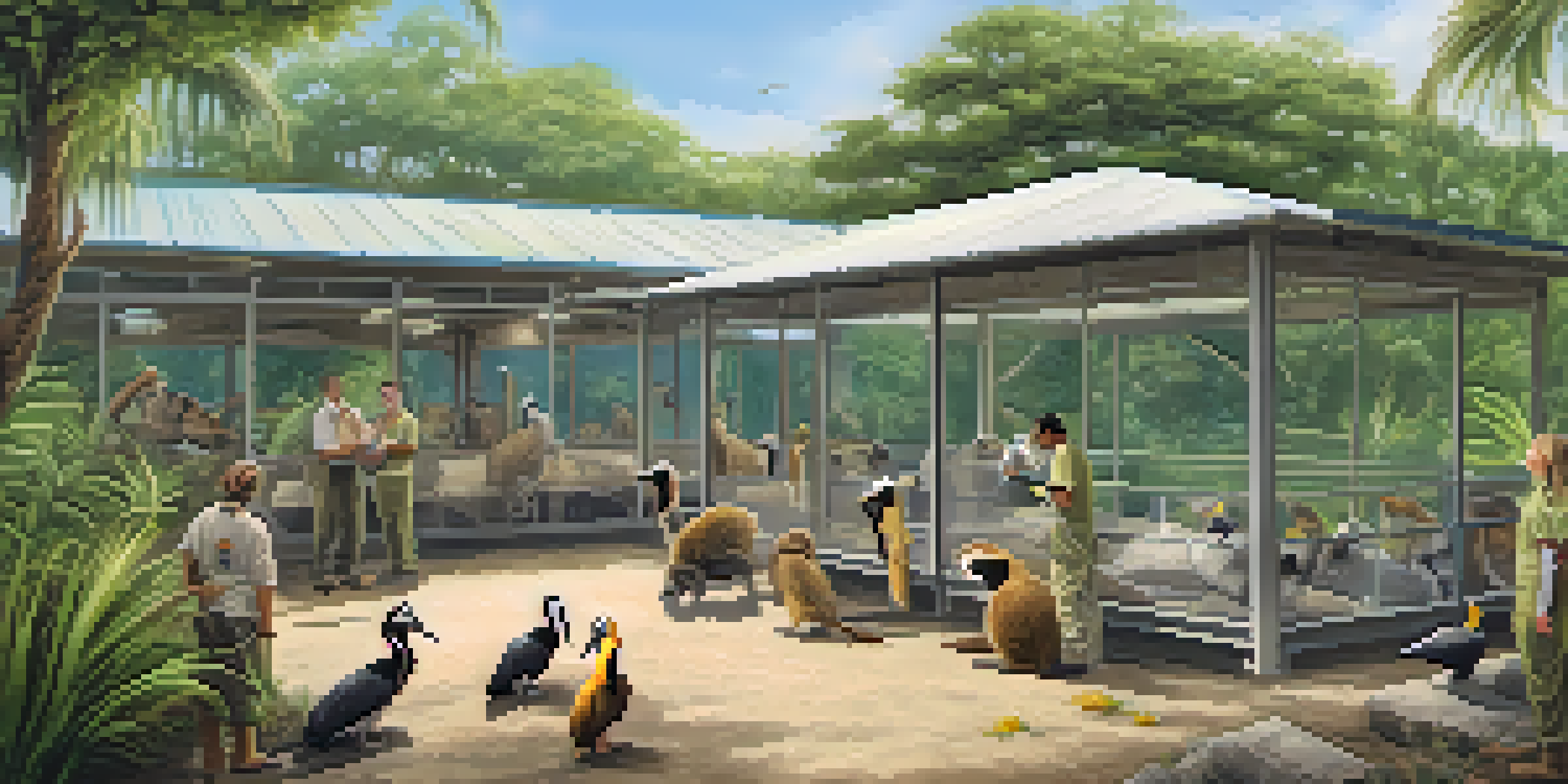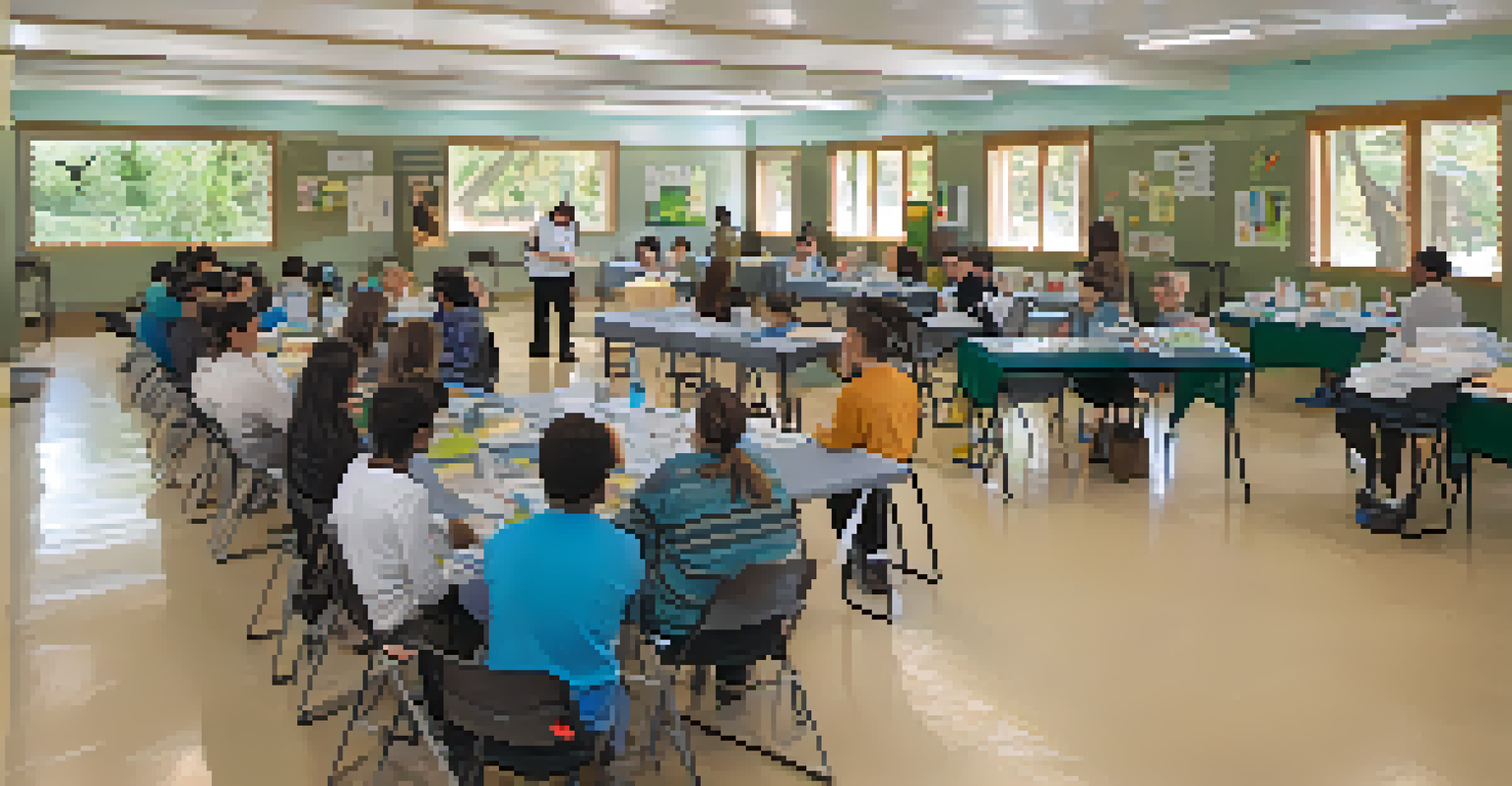Challenges Faced by Wildlife Rehabilitation Centers in FL

Limited Funding and Financial Support for Rehabilitation Efforts
Wildlife rehabilitation centers often operate on tight budgets, relying heavily on donations and grants. This financial strain can limit the number of animals they can care for, as well as the quality of care provided. The unpredictability of funding sources can lead to difficult decisions about prioritizing cases, which can be heartbreaking for staff and volunteers.
The greatest threat to our planet is the belief that someone else will save it.
For example, if a center receives a sudden influx of injured wildlife during a busy season, they may struggle to meet the demand without adequate resources. Additionally, many centers face rising operational costs, including veterinary supplies and facility maintenance, making it even more challenging to keep their doors open.
As funding becomes increasingly scarce, centers must find creative ways to engage the community, whether through fundraising events or educational outreach. Building a strong network of supporters can help ensure they have the financial backing needed to continue their vital work.
High Volume of Wildlife Injuries and Illnesses
Florida's unique ecosystem, combined with urban development, leads to a high volume of wildlife injuries and illnesses. From habitat loss to vehicle collisions, many animals find themselves in desperate situations, requiring immediate care. Wildlife rehabilitation centers often feel overwhelmed by the sheer number of cases they encounter daily.

For instance, during migratory seasons, these centers can see a spike in bird injuries, as thousands of creatures travel through the state. Each animal requires individual assessment and treatment, which can be time-consuming and emotionally taxing for the staff. The urgent need for care can sometimes outpace the available resources and personnel.
Funding Limits Care for Wildlife
Wildlife rehabilitation centers often operate on tight budgets, which restricts their ability to provide adequate care for injured animals.
To address this challenge, centers are increasingly focusing on community education to help prevent injuries. By teaching locals about safe wildlife interactions and promoting responsible pet ownership, they hope to reduce the number of animals needing rehabilitation.
Challenges of Public Awareness and Education Initiatives
Despite their crucial role in conservation, wildlife rehabilitation centers often struggle with public awareness. Many people are unaware of the services these centers provide or how to help injured wildlife. This lack of knowledge can lead to missed opportunities for intervention when animals are in need.
We won't have a society if we destroy the environment.
For example, a well-meaning individual might encounter an injured animal and not know the best course of action. Without clear guidance, they may attempt to care for the animal themselves, potentially causing more harm. Centers must actively work to educate the public on how to respond in these situations.
By leveraging social media, hosting workshops, and partnering with local organizations, rehabilitation centers can enhance their outreach efforts. Effective communication can empower the community to take action and support wildlife conservation.
Limited Space and Resources for Animal Care
Wildlife rehabilitation centers often face spatial constraints, making it difficult to house and care for injured animals. Many facilities were established years ago and may not have the capacity to handle today's growing number of cases. This limitation can negatively impact the quality of care they can provide.
For instance, if a center is already at capacity, they may have to turn away animals in need, which is a tough decision for any rehabilitation specialist. In some cases, this can lead to a backlog of animals that require treatment, further straining the center's resources. Limited space can also hinder the ability to create specialized environments for different species.
Education Can Reduce Wildlife Injuries
Increasing public awareness and education about wildlife can help prevent injuries and improve the chances for injured animals to receive timely care.
To combat these issues, some centers are exploring partnerships with other organizations to share resources. Collaborative efforts can help maximize available space and ensure that more animals receive the treatment they need.
Navigating Regulations and Legal Challenges
Wildlife rehabilitation in Florida is governed by a complex set of regulations that can pose significant challenges for centers. Navigating these laws requires time, effort, and expertise, which can be overwhelming for small organizations. Compliance with these regulations is essential, as violations can lead to hefty fines or even the closure of the facility.
For example, centers must obtain the necessary permits to care for certain species, which can be a lengthy and bureaucratic process. Additionally, they must adhere to specific guidelines regarding the care and release of rehabilitated animals, making it crucial to stay informed about any changes in legislation.
To mitigate these challenges, many centers seek legal advice or training to ensure compliance. By staying proactive about regulations, they can focus on their mission of rehabilitating wildlife and educating the public.
Volunteer Recruitment and Retention Challenges
Volunteers play a critical role in the operations of wildlife rehabilitation centers, but recruiting and retaining them can be challenging. The work is often physically demanding and emotionally taxing, which may deter potential volunteers from getting involved. Additionally, centers need committed individuals who can dedicate significant time to training and animal care.
Many centers struggle to find volunteers who possess the necessary skills and knowledge to work with wildlife. Without proper training, inexperienced volunteers may inadvertently harm animals or hinder the rehabilitation process. This can lead to frustration for both staff and volunteers alike.
Climate Change Challenges Rehabilitation
The impacts of climate change are escalating the number of wildlife injuries and illnesses, further straining the resources of rehabilitation centers.
To address these challenges, centers are focusing on creating a supportive and educational environment for volunteers. Offering training programs and mentorship can help retain passionate individuals, ensuring that the center has the necessary support to continue its work.
The Impact of Climate Change on Wildlife Rehabilitation
Climate change poses a growing threat to wildlife across Florida, complicating the work of rehabilitation centers. Rising temperatures, changing weather patterns, and habitat loss can lead to an increase in wildlife injuries and illnesses, placing additional strain on already overwhelmed facilities. This reality makes it essential for centers to adapt their strategies to address these emerging challenges.
For example, as sea levels rise, many coastal species are losing their habitats, leading to a surge in displaced animals. This can create a need for additional resources and support to rehabilitate these vulnerable populations. Centers must remain vigilant and responsive to the changing landscape of wildlife rehabilitation.

By collaborating with environmental organizations and participating in conservation efforts, rehabilitation centers can play a vital role in addressing the impacts of climate change. Their work not only helps individual animals but also contributes to the overall health of Florida's ecosystems.